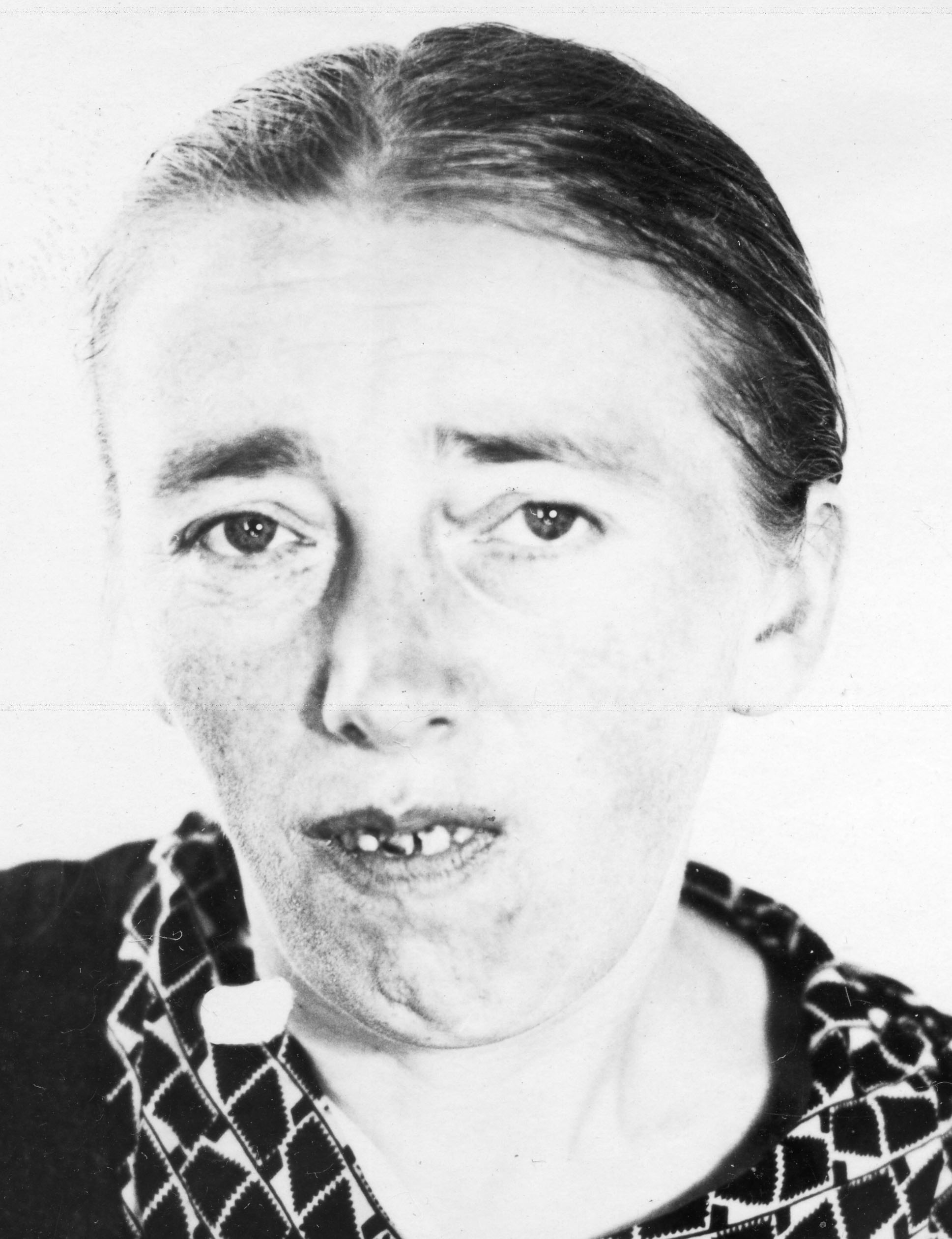Search for Names, Places and Biographies
Already layed Stumbling Stones
Suche
Frieda Jarmatz (née Jobmann) * 1900
In der Schlucht 19 (Harburg, Eißendorf)
HIER WOHNTE
FRIEDA JARMATZ
GEB JOBMANN
JG. 1900
EINGEWIESEN 1937
ALSTERDORFER ANSTALTEN
1943 "VERLEGT"
HEILANSTALT
AM STEINHOF / WIEN
ERMORDET 25.10.1943
Frieda Jarmatz, née Jobmann, born on 4 Feb. 1900 in Eissendorf, committed to the Alsterdorf Asylum (Alsterdorfer Anstalten), relocated to the "Heilanstalt Am Steinhof” ("Am Steinhof Sanatorium and Nursing Home”), murdered there on 25 Oct. 1943
Eissendorf quarter, In der Schlucht 19
Frieda Jobmann was the oldest of five children of the factory worker Heinrich Jobmann (born on 13 June 1866) and his wife Marie, née Meier, (born on 26 Aug. 1865). After her confirmation and completion of her school education, she worked as a nanny. On 27 Mar. 1923, she married the factory worker Heinrich Jarmatz, who later became a hairdresser. Their first daughter Lieselotte was born on 21 Sept. 1924, the second daughter Hertha followed on 2 Sept. 1927. These births were associated with lasting changes in the life of the young mother. She probably suffered from bouts of postpartum depression, combined with feelings of inferiority, and became increasingly withdrawn. Her transformation finally ended in general lack of interest, states of panic, and serious attention deficit disorders.
The diagnosis of the medical officer in charge was: hebephrenia (a pre-form of schizophrenia). On 20 Dec. 1928, Frieda Jarmatz agreed to being admitted to the "Heil- und Pflegeanstalt Lüneburg,” a "sanatorium and nursing home.” However, the longer she was in treatment there the more her condition was reinforced. She continued to be described as "demented, apathetic, and indifferent” as well as withdrawn. She spoke only when addressed by someone. Her marriage was divorced in 1935.
On 29 Apr. 1937, Frieda Jarmatz was relocated to what was then the Alsterdorf Asylum (Alsterdorfer Anstalten), which in the course of the admission examination diagnosed her with schizophrenia (dementia praecox).
Over the following months, her condition worsened rather than improving, as the entry in her patient file dated 19 July 1941 shows: "Patient requires complete care in terms of personal hygiene and feeding, is unmanageable in all matters, constantly lies in bed and has her eyes closed, and does not occupy herself.” One year later, the managing senior physician Gerhard Kreyenberg informed the Hamburg social administration that "[t]he patient suffers from schizophrenia and is in a catatonic state in which she does not speak, mostly lying there with eyes closed, bending her head forward, and only allowing herself to be pushed forward when walking. … Further institutionalization is required.”
On 16 Aug. 1943, Frieda Jarmatz was transferred along with 227 other women and girls from the Alsterdorf Asylum to the "State and Nursing Institution for Mentally Ill and Neuropathic Patients on Steinhof” ("Landes- und Pflegeanstalt für Geistes- und Nervenkranke am Steinhof”) in Vienna. As in many comparable institutions, in this Viennese hospital, the murder of disabled and mentally ill persons continued in other ways after the official "stop to euthanasia” in Aug. 1941.
The killing of newly committed patients took place systematically: by administering the wrong medication, non-treatment of diseases, and starvation. Of the Alsterdorf patients, 196 were no longer alive by the end of 1945. Their numbers also included Frieda Jarmatz. She spent not even ten weeks at this place. On 25 Oct. 1943, her heart stopped beating forever. After notification of her relatives, at their request, transmitted by telegraph, she was buried in Vienna
Translator: Erwin Fink
Kindly supported by the Hermann Reemtsma Stiftung, Hamburg.
Stand: October 2016
© Klaus Möller
Quellen: Gedenkbuch der Evangelischen Stiftung Alsterdorf; Archiv der Evangelischen Stiftung Alsterdorf, Krankenakte Frieda Jarmatz (V191); Wunder u.a., Kein Halten, 2. Auflage.


